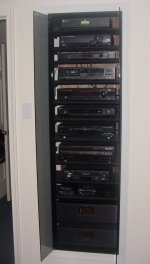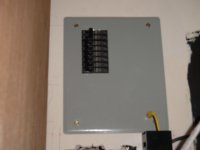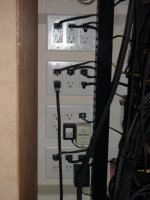willisrb
Member
- Location
- Scottsdale
- Occupation
- Elec Engr
Hi Folks, I need a little Code interpretation.
I'm an A/V design engineer and regularly spec individual THHN/THWN conductors for loudspeaker lines in larger facilities as a cost saving measure both in conduit size and cable cost.
For the first time in 40 yrs , I've been questioned as to whether this practice is Code compliant. The EC's position is "Per NFPA 70, Article 725 THHN and THHW are considered a Class 1 wiring method and is not an acceptable wiring method for Class 2 or 3 circuits." They are wanting to charge to upsize the conduit to accommodate PVC jacketed CMR cabling.
My question is does Code article hold for loudspeaker circuits or are these exempt per Chapter 800 Communications Circuits?
I'm an A/V design engineer and regularly spec individual THHN/THWN conductors for loudspeaker lines in larger facilities as a cost saving measure both in conduit size and cable cost.
For the first time in 40 yrs , I've been questioned as to whether this practice is Code compliant. The EC's position is "Per NFPA 70, Article 725 THHN and THHW are considered a Class 1 wiring method and is not an acceptable wiring method for Class 2 or 3 circuits." They are wanting to charge to upsize the conduit to accommodate PVC jacketed CMR cabling.
My question is does Code article hold for loudspeaker circuits or are these exempt per Chapter 800 Communications Circuits?




